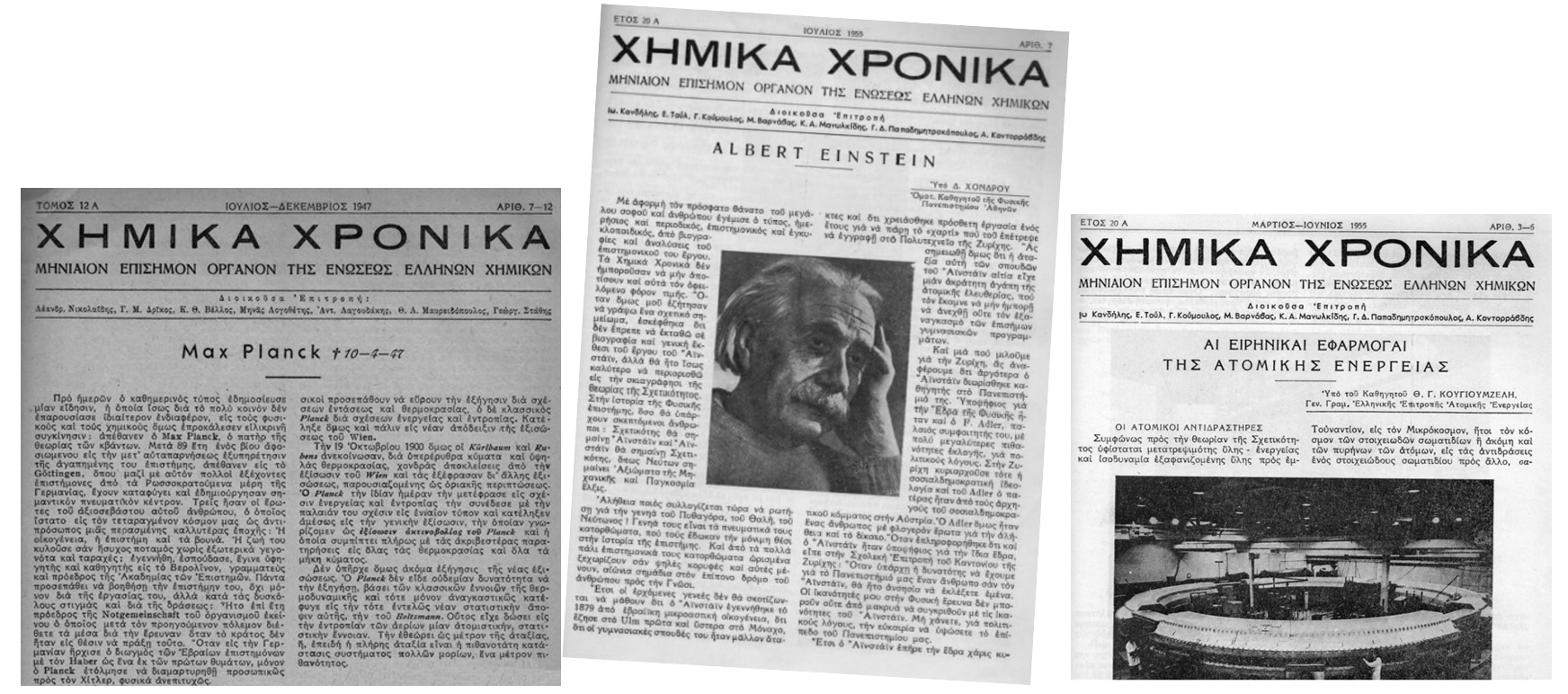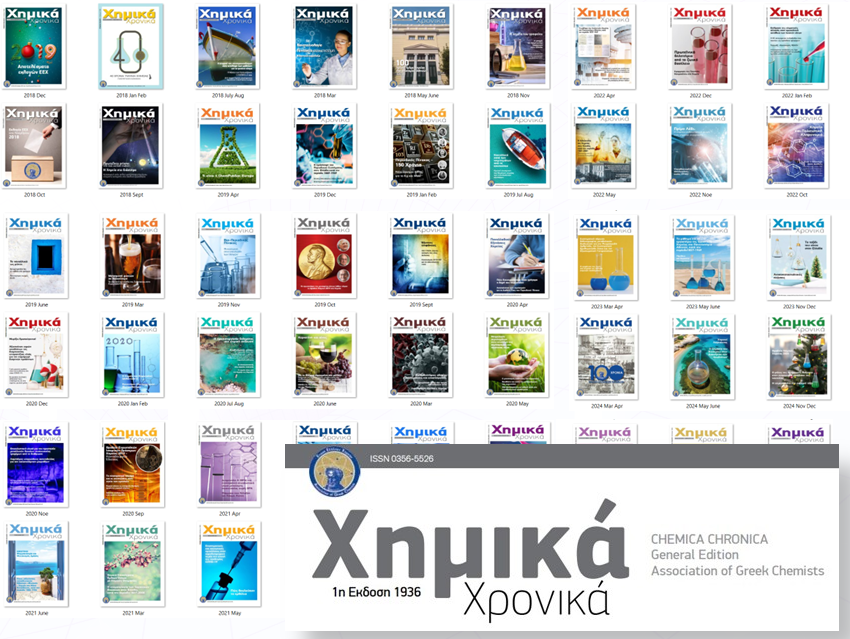1 Greece’s Oldest Chemistry Journal Still in Active Publication
In the vibrant tapestry of European scientific publishing, few publications embody the resilience and evolution of a national chemical community as profoundly as Chimica Chronica (Chemical Chronicles or Χημικά Χρονικά in Greek). Founded in 1936, this periodical stands as Greece’s oldest chemistry journal still in active publication.
More than a mere repository of research papers, Chimica Chronica serves as the official voice of the Association of Greek Chemists (Ένωση Ελλήνων Χημικών; EEX), a body established in 1924 to professionalize and advance the chemical sciences amid Greece’s turbulent interwar years.
In Greece, roughly between 1918 and 1939, the country experienced frequent government changes, coups, and conflicts between the monarchy and the republic. It also faced postwar reconstruction, debt, the effects of the Great Depression, and social challenges such as population exchanges (especially with Turkey in 1923), refugee crises, and regional tensions.

Figure 1. Chimica Chronica in 1936 – the very first page of the very first issue.
2 The Start of the Association of Greek Chemists & Chimica Chronica
2.1 Association of Greek Chemists
The Association of Greek Chemists itself emerged against a backdrop of economic recovery and scientific aspiration. As Greece grappled with Balkan Wars aftermath and population exchanges, the association united pharmacists, industrial chemists, and academics to standardize qualifications and promote research.
Brief Historical OverviewAfter the Balkan Wars (1912–1913) and World War I, Greece underwent major territorial expansion, but also economic and administrative strain. The country had to integrate new regions, rebuild after years of warfare and cope with the Asia Minor Catastrophe (1922) and the mass influx of refugees that followed. These upheavals created both urgent public health needs and a push for modernization in industry, education, and infrastructure. By the 1920s and 1930s, the Greek state was trying to stabilize its economy and rebuild society. This period saw growing interest in applied science as a means of national progress. Fields like agriculture, food production, textiles, mining, and public sanitation all demanded trained chemists. However, chemical education and professional standards were still fragmented with chemists working across universities, pharmacies, and factories often without a unified framework. The Association of Greek Chemists (ΕΕΧ) was founded in 1924, in this context of economic recovery and scientific aspiration. The goal of the Association was to unify the chemical profession by bringing together academic chemists, pharmacists, and industrial practitioners who had previously operated separately, to standardize credentials, promote research and innovation particularly in industrial chemistry, which was vital to Greece’s modernization efforts (e.g., fertilizers, dyes, soaps, and food preservation) and, last but not least, to advise the state on issues of public health, environmental safety, and industrial regulation. In essence, the ΕΕΧ emerged not just as a professional guild but as part of a broader national project of reconstruction and modernization. It represented a generation of Greek scientists who believed that scientific progress could drive economic and social renewal after a decade of wars, crises, and displacement. When Greece fell under Axis occupation (1941–1944 when Nazi Germany, Fascist Italy, and Bulgaria occupied Greece), most forms of organized intellectual life were suppressed. Yet Chimica Chronica managed to continue publication intermittently, supported by chemists who viewed science as an act of resilience and continuity amid cultural oppression. The very act of maintaining a scientific journal in an era of hardships symbolized a form of “intellectual resistance”. For many scientists, contributing to Chimica Chronica was a quiet statement that Greek science would not be extinguished, even under occupation a stance parallel to the broader spirit of cultural resistance seen in literature, art, and underground education. After the devastation of the Civil War (1946–1949), Greece entered a phase of rapid economic development (1950s–1970s) often called the “Greek economic miracle.” Industrial output grew dramatically in petrochemicals, fertilizers, cement, textiles, and food processing and the country began integrating into European markets and scientific frameworks. |
2.2 Chimica Chronica
By the 1930s, with membership growing and chemical education expanding at various universities, the need for a dedicated outlet became pressing. Chimica Chronica was launched in 1936 as a monthly bulletin to disseminate knowledge, share professional news, and chronicle the field’s progress.
Chimica Chronica debuted under the auspices of the EEX organizational committee, with its inaugural issue reflecting the era’s optimism. Printed in Athens, the periodical blended Greek-language articles on analytical methods, pharmaceutical advancements, and industrial applications. The name, Chemical Chronicles, evoked a narrative tradition, positioning it as a living record of Greek contributions to chemistry.
3 Growth of the Journal
The journal has been instrumental in documenting and disseminating the development of chemical research and education in Greece, particularly during the interwar period and the subsequent decades.
3.1 Development of Subscribers
Subscriptions extended beyond Greece, fostering ties with European societies. During World War II, Chimica Chronica persisted as a symbol of intellectual resistance. By the late 1940s, as Greece entered the Civil War recovery, the periodical had solidified its role, with over 100 issues and amassing a readership that mirrored the EEX’s expansion. The mid-20th century marked Chimica Chronica‘s maturation amid Greece’s economic miracle.

Figure 2. Chimica Chronica in 1940 – at the outbreak of the war after the Italian invasion of Greece.
3.2 Development of Content
The decades after the mid-20th century saw thematic shifts from classical chemistry and academic research toward applied sciences, with petrochemicals for the growing shipping sector, agrochemicals for olive and tobacco farming, and environmental monitoring amid rapid urbanization.

Figure 3. Chimica Chronica in 1956 featured a sketch of the first president of the Association of Greek Chemists, Georgios Matthaiopoulos (1873–1958). He is considered one of the founding figures of modern chemical sciences in Greece, sometimes called the ‘father’ of the chemical profession in the country.

Figure 4. Chimica Chronica, 1947 – on the death of Max Planck (left); Chimica Chronica, 1955 – on Albert Einstein and atomic/nuclear energy for peaceful purposes (right).
In the 1970s, a New Series of Chimica Chronica was launched, which was in the 1990s incorporated into the European journals European Journal of Inorganic Chemistry (EurJIC) and European Journal of Organic Chemistry (EurJOC), supported by various European chemical associations and societies.
However, the General Series (Γενική Σειρά) of Chimica Chronica continued maintaining its national role as a professional, educational, and historical record of Greek chemistry, even as its more research-focused part became internationalized.
By the 1980s–1990s, the world of scientific communication was changing dramatically in the new era of the internet. Publications were much easier to set up, hence, competition was fierce and just like in any other discipline, countless projects appeared out of nowhere or disappeared overnight. Chimica Chronica “weathered the storm” by staying consistent in purpose continuing to document Greek chemical life, publish accessible educational articles, news of conferences, and historical retrospectives. While many journals vanished or were digitized out of existence, it preserved its identity as a bridge between professional chemists, educators, and researchers, maintaining editorial reliability and continuity when the information landscape became unstable and oversaturated.
From dedicated issues on global events like the International Year of the Periodic Table, the annual Nobel Prizes or the COVID era and its challenges, to historical special issues like the 100-year anniversary of EEX or the history of the Greek Departments of Chemistry, Chimica Chronica keeps on delivering. As the Association of Greek Chemists marked its centennial in 2024, Chimica Chronica celebrated nearly nine decades of bridging local innovation with global discourse, adapting from wartime disruptions to the digital age while fostering a legacy of chemical inquiry rooted in Hellenic traditions.
4 The Pulse of Our Community
Today, Chimica Chronica thrives as a bimonthly, open-access publication hosted on the EEX website. From its 1936 inception as a beacon for a fledgling profession to its modern vitality in 2025, Chimica Chronica encapsulates Greek chemistry’s journey as resilient, innovative, and deeply human. It honors ancient roots, with Democritus serving as the emblem of the Association of Greek Chemists and marking the pages of the periodical, while keeping up with scientific developments in the changing world of the AI era.
Chimica Chronica is not just a periodical; it is the pulse of our community, ensuring Greece’s chemical voice echoes across the country and beyond.
The Author
Dr. Spiros Kitsinelis
Vice-Chief Editor of Chimica Chronica and Publishing Manager since 2016; also Publishing Manager for the Journal of the Association of Greek Chemists (JAGC).
Also of Interest

Spotlight: 100 Years of the Association of Greek Chemists (1924 – 2024)
A brief history of chemistry in Greece and the Greek chemical society





